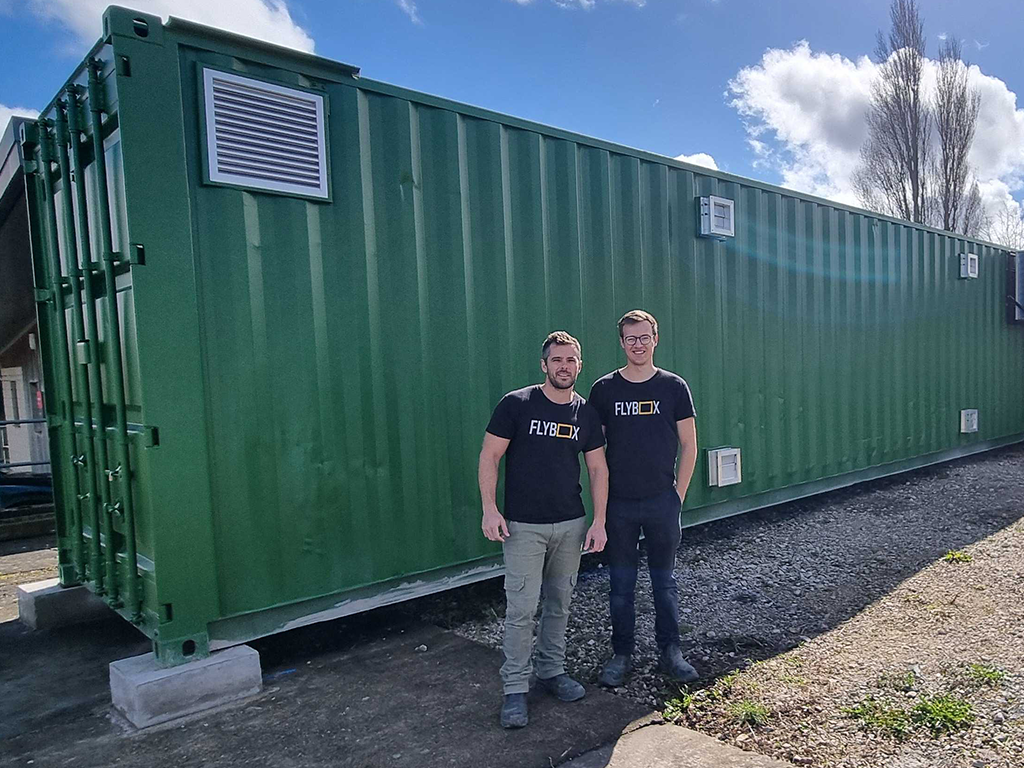The global rise of insect farming presents a sustainable, resource-efficient solution to modern challenges in waste management, food production, and animal feed. But for new entrants and seasoned innovators alike, one of the first decisions is choosing the right farm setup. Whether you’re starting small with a container-based system or building an industrial-scale facility, each model comes with its own set of advantages, complexities, and strategic roles.
In the early days of the industry, large-scale commercial operations dominated the landscape, driven by high-capacity production and export ambitions. However, as the industry matured, innovators recognised the untapped potential in starting small. Pilot projects emerged as a strategic entry point—enabling R&D, feasibility studies, economic assessments, and business case validations before committing to full-scale investment. This shift opened the doors for more entrepreneurs, researchers, and SMEs to participate and shape the industry’s future.
This guide explores the main types of insect farming setups, the business models behind them, and what to consider when choosing the best fit for your operations.
Choosing the right business model
Insect farms can be structured in two primary ways depending on resources and objectives: vertically integrated or specialised.
Vertical Integration Model
In this model, the insect farm handles every stage of production in-house: from feedstock preparation and breeding to processing and distribution.
Advantages:
- Complete control over quality and traceability
- Operational synergy and cost optimisation
- Suited for large-scale farms aiming for market dominance
Considerations:
- Higher upfront investment
- Greater complexity to manage
- Requires a skilled workforce across multiple discipline
Specialisation Model
Farms focus on a specific stage—such as breeding, bioconversion, or post-processing—while outsourcing other components.
Advantages:
- Lower barrier to entry
- Easier to scale in a specific niche
- Encourages collaboration and supply chain development
Considerations:
- Less control over the final product
- Dependency on partner networks
- Need for robust logistics and communication
Types of Insect Farms
Polytunnel Insect Farms
Polytunnel insect farms are semi-covered structures that leverage natural climate conditions to reduce energy requirements for Black Soldier Fly farming. They are especially suited for regions with stable weather or access to low-cost heat.
Key Characteristics:
- Greenhouse-style tunnels with integrated ventilation
- Use of ambient temperature with optional climate control tech
- Reduced infrastructure and energy costs
- Designed for bioconversion and organic waste management
Best for:
- Warm-climate regions (e.g. Global South)
- Farmers with access to low-cost heat
- Insect bioconversion, organic waste management, and sustainable farming
Strategic Advantages:
Polytunnels maximise natural weather conditions while integrating advanced environmental controls to ensure performance consistency. As an efficient, climate-adaptive approach, they offer an ideal pathway for sustainable insect farming where conditions permit.
Containerised Pilot Insect Farms
Pilot insect farms are small-scale, mobile insect farming units housed in 20ft or 40ft retrofitted shipping containers. They are typically used for research and development, feasibility studies, and pilot-stage production.
Key Characteristics:
- Modular and configurable
- Easy to deploy on-site
- Lower investment threshold
- Ideal for 5–100 kg larvae/day
- Manual or semi-automated operations
- Often dedicated to a single task: breeding, growing, or testing
Best for:
- Research & Development and Trials
- Entry-level insect entrepreneurs
- Testing feedstock under local climate or regulation
- Business case validation and feasibility assessments
Strategic Advantages:
Pilot farms offer a rapid and low-risk pathway into insect farming. Their modular design, on-site flexibility, and isolated biosecurity make them ideal for testing, refining operations, and conducting early-stage R&D trials. This adaptability allows operators to validate performance and de-risk investments before scaling, accelerating both innovation and time-to-market.

Modular Multi-Container Systems
Multi-module pilot insect farms consist of interconnected containers or rooms, each designed to support specific stages of the production cycle. Operators can either focus on one phase with multiple modules (e.g., rearing or breeding) or combine various modules to cover multiple stages within the farming process.
Key Characteristics:
- Modular architecture for flexible configurations
- Suitable for growing, breeding, or processing
- Medium-level automation with centralised control
Best For:
- Small to medium enterprises scaling up
- Decentralised insect farming
- Operations requiring adaptable infrastructure
Strategic Advantages:
Multi-module pilot insect farms offer a flexible and scalable approach to insect farming. They enable farmers to expand production incrementally while maintaining control over specific operational phases. These set-ups allow for efficient allocation of resources, streamlined workflows, and enhanced adaptability as market demands and production goals evolve.
Full-Stack Commercial Insect Farms
Full-stack commercial farms are comprehensive industrial insect farming systems housed in purpose-built or retrofitted buildings. These systems integrate every aspect of production—breeding, hatching, growing, harvesting, and post-processing—under one roof, optimising both efficiency and scale.
Key Characteristics:
- Integrated tray-stacking systems for high-density rearing
- Advanced automation for feeding, monitoring, and harvesting
- End-to-end environmental control for climate, humidity, and airflow
- Rapid deployment in existing or new infrastructure
Best For:
- Large-scale industrial insect production
- Highly efficient, automated operations
- Significant waste stream valorisation projects
- Certified ingredient manufacturing for feed/food
- Rapid deployment of high-capacity facilities
Strategic Advantages:
Full-scale commercial insect farms deliver maximum throughput, consistency, and automation. Their integrated systems streamline production from end to end, enabling efficient large-scale insect bioconversion and byproduct processing.
Final Thoughts
By understanding the trade-offs of each model and aligning them with strategic objectives, insect farmers can chart a path toward profitability, sustainability, and innovation in this rapidly evolving industry.
Whether you’re just starting out or already running a large-scale operation, Flybox® Insect Farms offer advanced solutions designed to streamline every stage of your journey. From fully equipped Pilot Systems housed in 40ft containers for R&D and feasibility testing, to Commercial Systems ready for rapid deployment and full-scale integration, our technology helps you scale efficiently and sustainably. With cutting-edge automation, climate controls, and proprietary Insect Waste Management™ solutions, Flybox® enables businesses to convert organic waste into valuable resources.
Explore our solutions and take the first step in your insect farming journey today.
